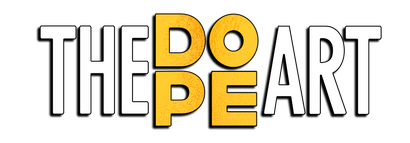Your Cart is Empty
FREE SHIPPING ON ORDERS OVER $100 in the U.S.
FREE SHIPPING ON ORDERS OVER $100 in the U.S.
Gothic Home Decor: When Darkness Meets Elegance
March 03, 2023 5 min read
Gothic Home Decor: Adding Dark Elegance to Your Living Space
Gothic decor merges sophistication and darkness to produce an extraordinary and remarkable visual appeal. It is influenced by Gothic architecture, literature, and elements from horror movies and dark fantasy. Introducing Gothic decor to your home is an excellent approach to inject drama and refinement into your living area. This write-up offers a range of suggestions and concepts for infusing Gothic style into your home decor.
When designing a Gothic home, it's important to balance the elements to avoid creating a space that feels cluttered or overwhelming. Incorporating a few key pieces and textures can help achieve the desired aesthetic without going overboard. With the right combination of elements, a Gothic home can be a romantic and inviting space that is both unique and memorable.
Color Palette
The color palette is an essential element of Gothic home decor. Black is the predominant color, but you can also use shades of gray, deep red, dark purple, and dark green. These colors create a moody and atmospheric ambiance that is perfect for Gothic decor.
Furniture
Gothic furniture is typically made of dark woods, such as mahogany or oak, and features intricate carvings and details. Furniture pieces like ornate chairs, antique mirrors, and arched bookcases are perfect for achieving a Gothic look.
Decorative Accents
Gothic home decor is all about the details. Decorative accents like candelabras, skull-shaped candles, vintage books, and antique chandeliers can add a touch of dark elegance to your living space.
Artwork
Gothic artwork is an important element of this style. Dark and eerie images like skulls, bats, and ravens are often featured in Gothic art. You can also incorporate paintings or prints of Gothic architecture, landscapes, and portraits of famous Gothic literature characters like Dracula and Frankenstein.
The Gothic Home: Embracing the Dark Side in Interior Design
The Gothic home is a style of interior design that embraces the dark and dramatic side of architecture and decor. This style draws inspiration from medieval castles, Gothic cathedrals, and horror movies to create an atmosphere of mystery and intrigue.
The key elements of a Gothic home include dark colors, such as black, deep purple, and burgundy, as well as rich textures like velvet, leather, and lace. Gothic decor often features ornate details, such as intricate carvings, arches, and gargoyles. Lighting plays a crucial role in creating the mood, with candles and chandeliers adding a sense of romance and drama.
In a Gothic home, furniture is often oversized and imposing, with heavy wooden pieces and ornate metalwork. Tapestry and other wall hangings are common, with images of skulls, skeletons, and other dark imagery adding to the ambiance. Gothic homes also often include items such as antique weapons, taxidermy, and other curiosities.
The Immortal beauty of a Skeleton Painting
Skeleton paintings are a type of macabre art that often features images of human skeletons. These paintings can range from realistic depictions of bones and skulls to more fantastical images of skeletal creatures and monsters.
Skeleton paintings can be created using a variety of mediums, including oil and acrylic paints, watercolors, and mixed media. They can be done in black and white, or with a range of vibrant colors to create a more whimsical or surreal effect.
One popular type of skeleton painting is the Dia de los Muertos or Day of the Dead style, which is a Mexican holiday that celebrates deceased loved ones. These paintings often feature colorful skeletons dressed in festive clothing and adorned with flowers and other decorations.
Finding the Perfect Macabre Art Style
Macabre art is a style that celebrates the dark and mysterious side of life. It often includes images of death, decay, and horror, and can be found in a variety of mediums including painting, sculpture, and photography. If you're looking to incorporate macabre art into your home decor, there are a few things to keep in mind.
Know your style: Gothic Wall Art can take many forms, from realistic depictions of death and decay to fantastical images of monsters and ghosts. Decide what type of macabre art appeals to you most and look for pieces that fit that style.
Consider the medium: Macabre art can be found in many mediums, including oil paintings, charcoal drawings, and mixed media sculptures. Think about what type of medium will work best in your home, and choose pieces that fit your personal style.
Shop online: Macabre art can be difficult to find in traditional art galleries and stores. Instead, consider shopping online at websites that specialize in macabre art, such as Etsy or DeviantArt.
Attend art fairs and conventions: Many artists who specialize in macabre art attend conventions and fairs where they showcase their work. This can be a great opportunity to discover new artists and find unique pieces for your home.
Set a budget: Macabre art can range from affordable prints to high-end original pieces. Set a budget for what you're willing to spend, and focus on finding pieces that fit within your price range.
Jesse Johnson's Gothic Home Decor
Jesse Johnson, the mastermind behind TheDopeArt.com, is renowned for his extraordinary and innovative employment of the cranium emblem in his artwork. Johnson's artistic modus operandi is a conflation of street art and conventional painting techniques, engendering a distinctive and visually captivating aesthetic.
One of Johnson's noteworthy methodologies is his utilization of vibrant and vivid hues that stand in opposition to the somber and eerie depictions of the skulls in his paintings.
His artwork delves into a plethora of themes, such as mortality, spirituality, and the human psyche. His implementation of the skull as a central emblem symbolizes the notion of memento mori, which translates to "remember that you will perish," a motif that has remained salient in the realm of art throughout history.
FAQ
Q: What is gothic wall decor?
A: Gothic wall decor refers to home decorations that feature elements inspired by Gothic architecture and design, such as ornate patterns, intricate details, and dark, dramatic colors.
Q: What are some common types of gothic wall decor?
A: Some common types of gothic wall decor include tapestries, paintings, prints, posters, wall sculptures, and decorative mirrors. Gothic-themed wallpaper and wall decals are also popular choices.
Q: What materials are commonly used in gothic wall decor?
A: Gothic wall decor can be made from a wide range of materials, including metal, wood, stone, fabric, and glass. These materials can be used individually or combined to create more complex pieces.
Q: What are some popular motifs and symbols used in gothic wall decor?
A: Some popular motifs and symbols in gothic wall decor include gargoyles, crosses, skulls, ravens, bats, roses, and fleur-de-lis. These can be incorporated into designs in a variety of ways, such as through intricate patterns or as standalone images.
Q: Where can I find gothic wall decor?
A: Gothic wall decor can be found at a variety of retailers, including home decor stores, online marketplaces, and specialty shops that focus on Gothic or alternative style. You can also find unique pieces at craft fairs, art shows, and from independent artists and makers.
Q: How can I incorporate gothic wall decor into my home without overwhelming the space?
A: To incorporate gothic wall decor into your home without overwhelming the space, start by choosing one or two pieces that speak to you and building from there. You can also balance the darker, more dramatic elements of gothic decor with lighter accents and neutral colors.
Subscribe
Sign up to get the latest on sales, new releases and more …
Size Charts









